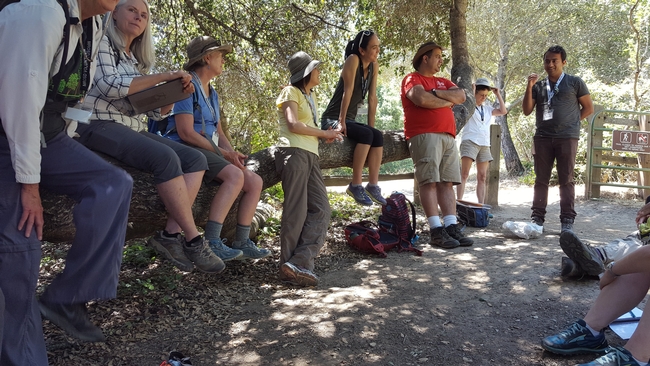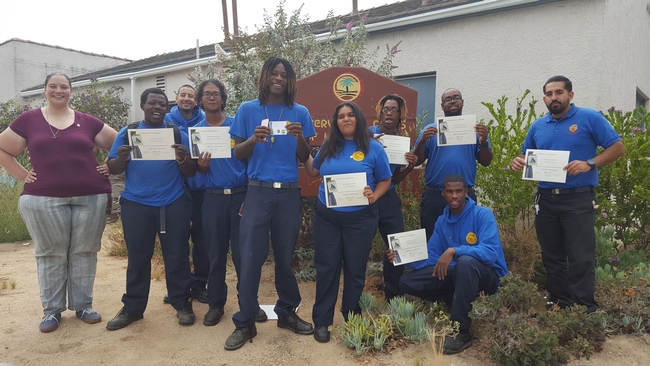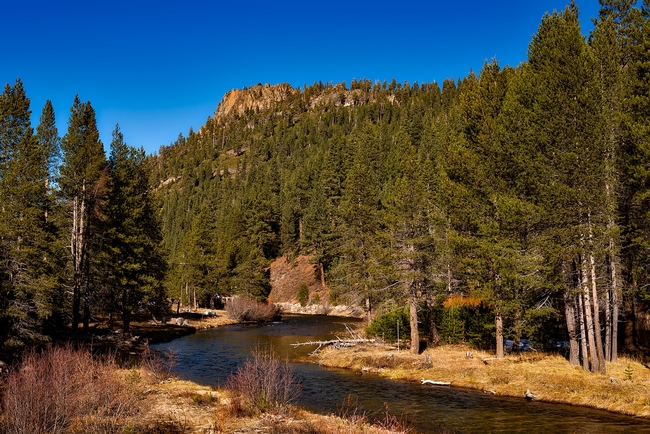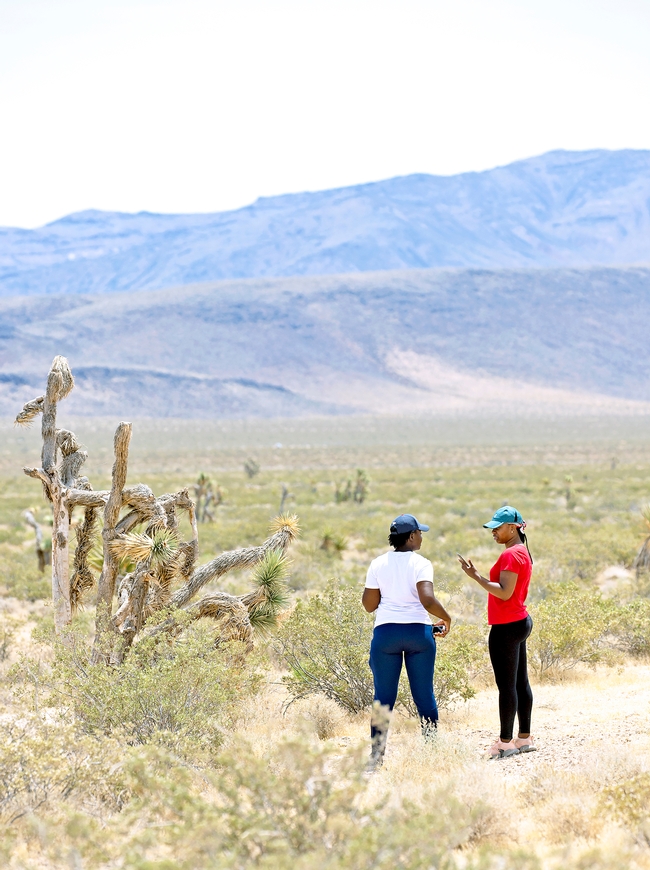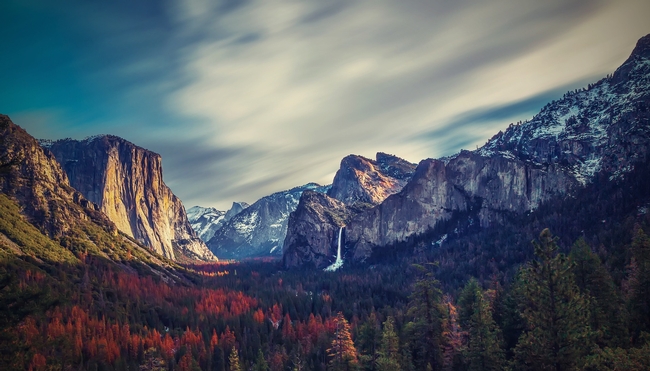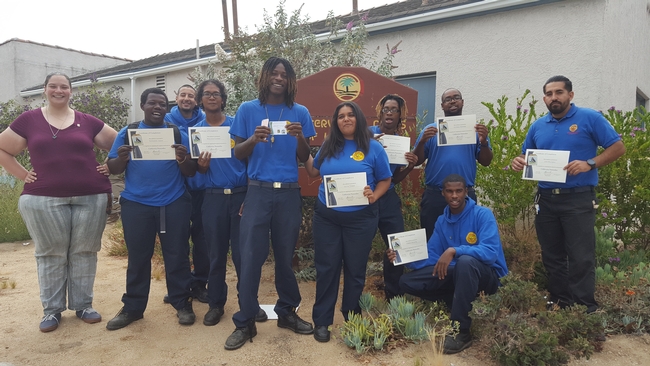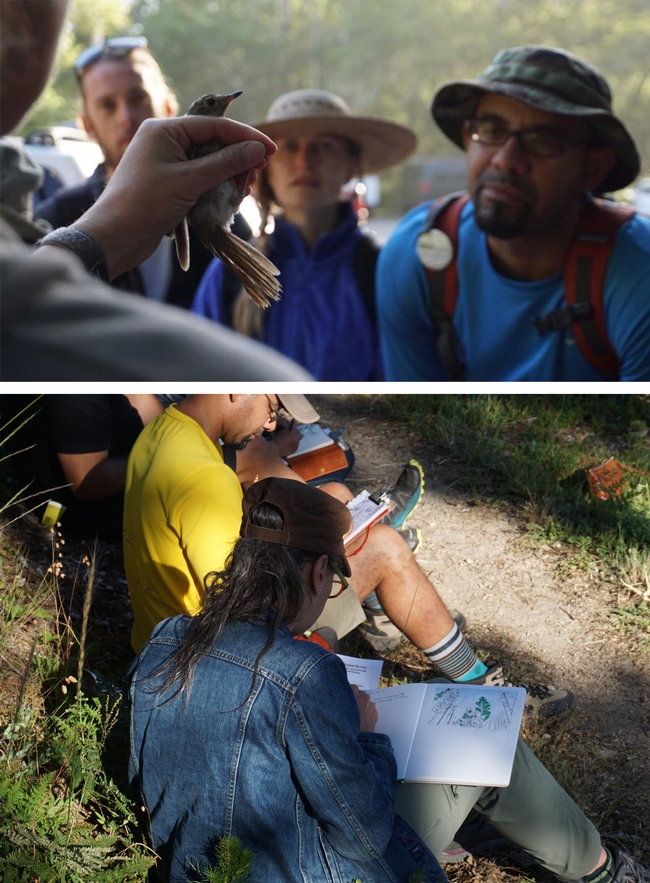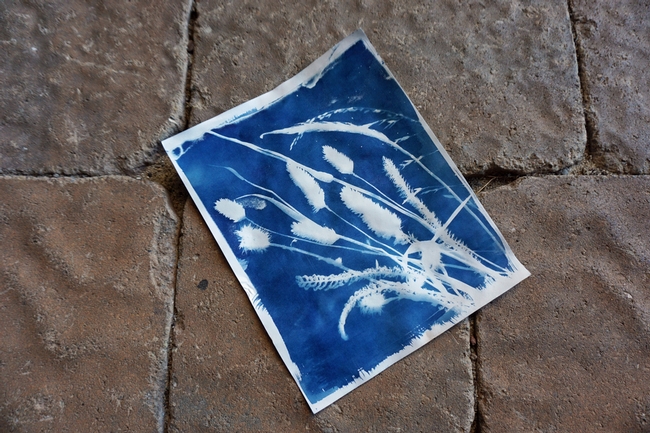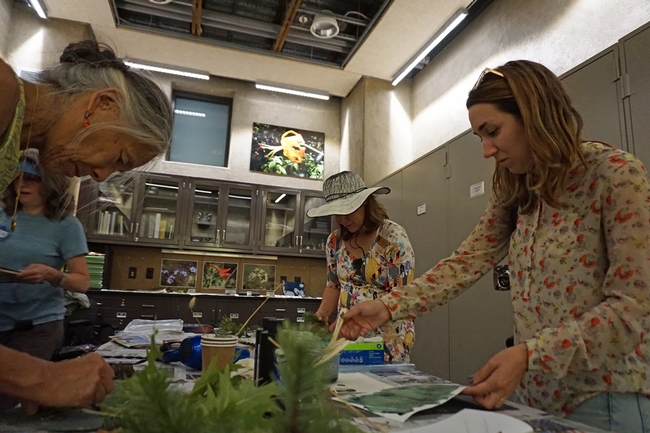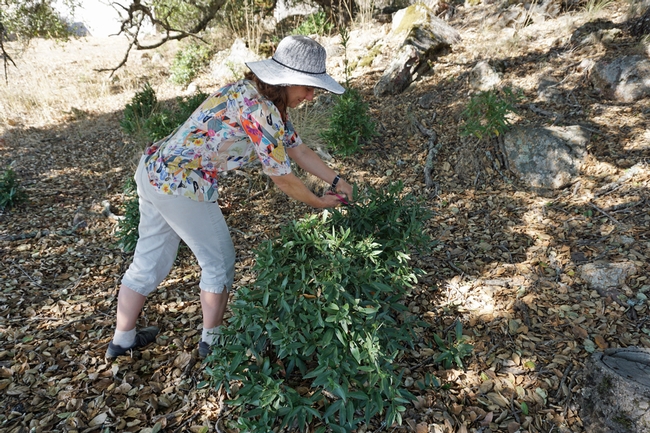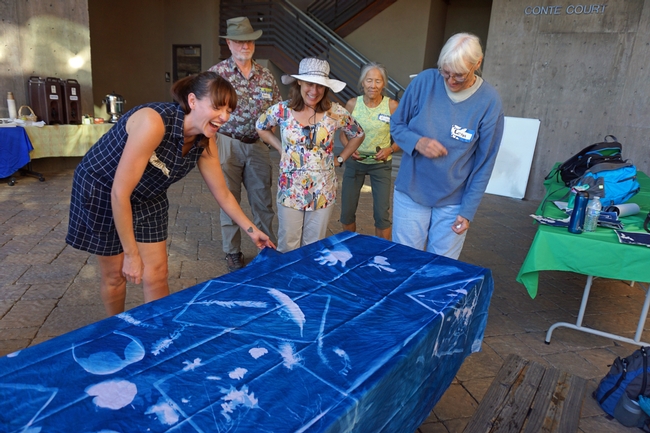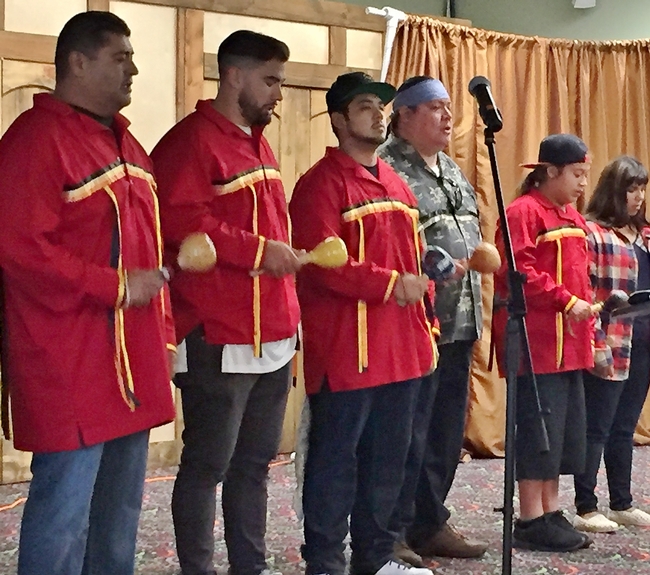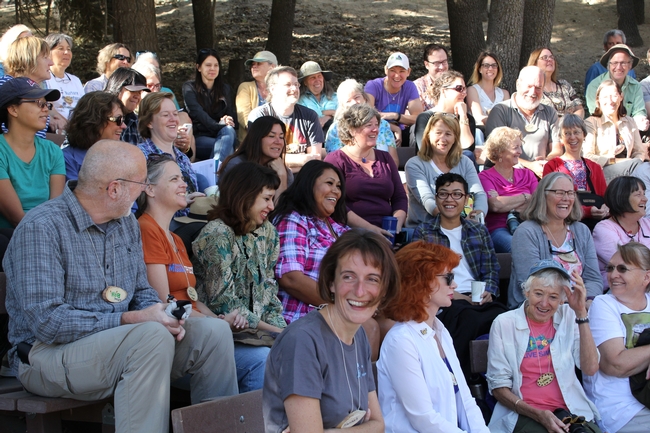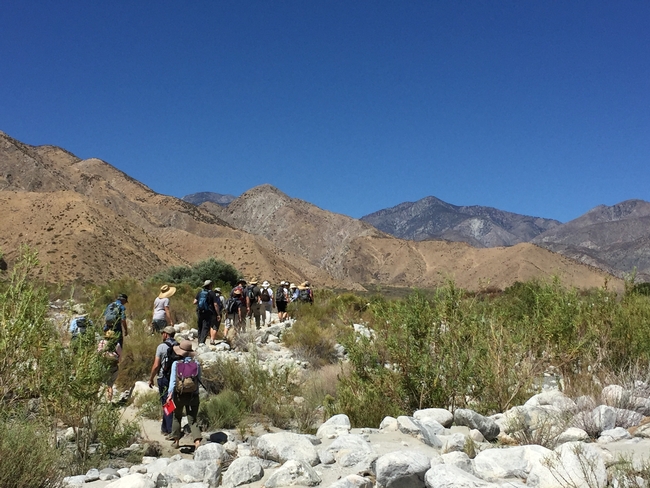Posts Tagged: nature
UC California Naturalist Conference, Oct. 7–9, highlights environmental challenges, diverse voices
Climate change, extreme drought, intense wildfires and the COVID-19 pandemic can all be linked to humanity's troubled relationship with the natural world.
For more than a decade, healing and deepening connections between people and the environment have been pillars of the UC California Naturalist Program. Partnering with over 80 organizations across the state, the program – a part of University of California Agriculture and Natural Resources – has trained over 6,500 participants and certified more than 5,350 volunteers who engage fellow community members in advancing environmental stewardship and climate resilience.
To celebrate its 10th anniversary, the program is convening a statewide conference Oct. 7–9 along the north shore of Lake Tahoe, under the theme of “Celebrating Community, Nature and Resilience for a Just Future.” Keynote speakers are José González, founder of Latino Outdoors; Rhiana Jones, director of the Washoe Environmental Protection Department; and Obi Kaufmann, artist and eco-philosopher. Members of the public are invited to register for the conference.
UC Naturalists and Climate Stewards (the latter program was established in 2020), as well as instructors for both certification courses, will gather with community members to reflect on their work, share best practices and chart a path toward a more sustainable and equitable future.
“We're striving to create a welcoming and safe space where we can challenge our own long-standing assumptions and perspectives and hear from a wide range of voices on crucial topics, including the latest on climate change and resilience; participatory science; and equity, diversity and inclusion in the conservation space,” said Gregory Ira, director of the UC California Naturalist Program.
Ira also highlighted the conference's equity-based registration fee structure, aimed at minimizing cost as a barrier to participation.
“We encourage anyone with an interest in learning more about California's unique ecosystems – and becoming a better steward of the environment – to join us for the weekend,” he said. “We truly value the perspectives and experiences you can bring to our conference.”
The conference agenda will feature engaging presentations, hands-on workshops and field trips to the area's natural wonders. Presenters include:
- Herman Fillmore, culture/language resources director, Washoe Tribe of Nevada and California
- Don Hankins, Professor, Geography and Planning, Chico State University
- Patricia Maloney, Forest and Conservation Biologist, Tahoe Environmental Research Center, UC Davis
- Adina Merenlender, co-founder of the California Naturalist Program and UC Cooperative Extension professor in conservation science
- Jennifer Norris, deputy secretary for biodiversity and habitat, California Natural Resources Agency
- Ken-ichi Ueda, co-founder and co-director of iNaturalist, UC Berkeley School of Information
For more information and to register, visit the conference website at https://ucanr.edu/sites/2022CalNatCon/.
UCCE promotes nature as a way to improve wellness
Many Californians' well-being has suffered after months of sheltering at home amid the coronavirus pandemic. An antidote for the boredom, loneliness and uncertainty is spending some time outdoors, according to UC Cooperative Extension experts. It's a practice that renews the spirit and can easily be done while following social distance and face covering requirements.
A few 4-H youth camp programs have gone virtual, but for most 4-H members the annual trek to summer camp has been cancelled. 4-H Youth Development advisor Marianne Bird is encouraging 4-H members and families to get outside on their own.
“Being outdoors is something healthy to do,” Bird said. “Public parks are being used more and in safe ways. I see groups of people social distancing and eating lunch in the shade, bringing a lawn chair and sitting outside. Two weeks ago, I saw someone playing violin next to the American River bike trail.”
This month, Bird is teaming up with two colleagues for socially distanced camping for a few nights in the Sierra. They'll drive separately and sleep in separate tents, while they hike trails, swim in a lake and enjoy the night sky at least 6 feet apart. But even in her hometown of East Sacramento, Bird said she finds nature that promotes her well-being.
“I ride my bike on the American River trail. I see wild turkeys, jackrabbits and coveys of quail,” Bird said. “Walking in my neighborhood, I found a woodpecker home in a tree. Nature is everywhere, even in our urban environment.
UC Cooperative Extension assistant vice provost Katherine Soule conducts research on the benefits of outdoor activities. She and colleagues surveyed visitors at the Leaning Pine Arboretum in San Luis Obispo. Respondents said the garden visits wove together opportunities for learning, stress relief and relaxation, which enhanced the visitors' enjoyment of life, their self-awareness and their sense of belonging.
One participant mused, visiting a botanical garden “feels open, not cramped. In my mind, that's part of being outdoors. Outside you want to be free, open. I enjoy it.”
UC Cooperative Extension's California Naturalist program is including research-based information on the health benefits of nature exposure in its soon-to-be launched UC Climate Stewards program, according to Sarah-Mae Nelson, UC Climate Stewards Initiative academic coordinator. The pilot training program that begins Aug. 24 teaches volunteers to educate the community on climate change mitigation, adaptation and resiliency,
Trainees will learn about research conducted around the world that has documented the restorative capacity of nature, Nelson said. For example, a 2010 research project in Japan found that spending time in forests lowered blood pressure, cut levels of cortisol – commonly known as the “stress hormone” – and reduced pulse rate, among other beneficial health impacts.
Benefits were derived from visiting zoos and aquariums, according to a 2010 study in Japan and a 2015 study in England. Just working in the presence of potted plants reduced stress and increased productivity, found scientists in Australia. Researchers in the Netherlands discovered that simply gazing at photos with trees and parks can prevent and relieve stress.
“What's really encouraging to me as an educator and communicator is the evidence for zoos, aquariums and images as proxies,” Nelson said. “Right now, with the situation with COVID-19, people can't access nature as readily. And, looking at the diversity, equity and inclusion aspect, some people don't have the financial or social capability to enter into natural spaces.”
Another study that is shaping the UC Climate Stewards curriculum, conducted in England and published last year, indicated that spending at least 120 minutes in nature provides a significant positive impact on mental and physical wellness.
“After 120 minutes, the participants felt less depressed and had an increased ability to deal with stressful situations,” Nelson said.
For that reason, the 120-minute threshold number for nature exposure will be part of the UC Climate Stewards' approach to reduce the effects of traumatic stressful experiences, like those brought on by climate change concerns.
Expanding access to the California Naturalist community
Since the inception of the California Naturalist program in 2012, we have been committed to embracing inclusion in all its forms and creating an open, diverse, and equitable community. It is embedded in our mission to foster a diverse community of naturalists and promote stewardship of California's natural resources through education and service. With 10 bioregions and over 39 million people, California is a diverse state naturally and culturally, and we are striving to provide greater access for underserved populations to this new statewide education and service program.
There are several ways in which we're addressing this critical work. One approach is identifying gaps in who we're reaching so we can prioritize filling those gaps. Using GIS to integrate environment, health and socioeconomic data from Cal Enviroscreen, the program prioritizes gaps in our geographic coverage and areas with the most disadvantaged communities.
To reach these communities we are working to expand partnerships with community colleges and organizations offering workforce development. California Naturalist certification can be integrated into a college course and to engage students embarking on their careers or those learning new skills for a change in career or work. For example, Pasadena City College offers certification as a part of their field biology class. Students gain valuable hands-on experiences, build their resume, and make connections to the wider naturalist community.
We also work with institutions that focus on training young underserved adults. For instance, Mountains Recreation and Conservation Authority (MRCA) in Greater Los Angeles incorporated California Naturalist into “Bridge to Park Careers,” a competitive 20-week training program that equipped young adults from urban areas with knowledge and multiple certifications needed to secure jobs as educators and naturalists with park agencies. We maintain this program partnership with nonprofit Community Nature Connection, who continues the educational programming previously conducted under MRCA.
Finally, scholarships are available in many locations to cover program fees for participants. To further increase scholarship opportunities, we are excited to announce our newest initiative, the California Naturalist Scholarship Fund. The fund will help break down barriers people face in accessing the program, off-set course participation costs, and ultimately build a more inclusive community of naturalists. In 2016, 29 percent of California Naturalist course participants and 21 percent of statewide conference attendees received a need-based scholarship to attend courses and training events.
2018 holds much promise for strengthening our commitment to inclusion. As we enter the holiday season and prepare for the new year, please consider giving the gift of knowledge and the spark of curiosity. Together we can help protect and preserve nature by engaging more Californians in stewardship, discovery, and action.
UC California Naturalists interpret nature with art
Art is an expression of creativity, a conveyance of beauty, and for naturalists, it is a way to process, remember and interpret nature.
Many branches of nature art are popular, such as photography, painting and sketching. The UC California Naturalist Regional Rendezvous in October introduced an old but uncommon method for documenting natural objects – cyanotype.
At the CalNat Rendezvous at the Pepperwood Preserve, Santa Rosa artist Jessica Layton taught the cyanotype process to volunteers certified by the UC California Naturalist program, giving them a new tool to use in educating and engaging children and adults in conservation organizations they work with around the state.
The cyanotype process begins by mixing two chemicals - ferric ammonium citrate and potassium ferricyanide – to create the blue photo reactive solution. The chemicals may be purchased at art stores and online by searching for cyanotype solutions.
Once blended, the chemicals are painted on paper or cotton cloth and allowed to dry. Leaves, grasses, seeds, pine cones, flowers, stones – any number of natural objects collected outside may be artfully arranged on the blue background and, if needed, held in place with a pane of glass.
The project is then set out in bright sunlight for 5 to 7 minutes, brought back inside to be washed in clean water and allowed to dry. The areas of the paper or cloth exposed to the sun are a radiant lapis blue; the areas that were shaded by the natural objects appear in silhouette.
“I have come to appreciate art as a way to improve observation skills and deepen an appreciation for nature,” Merenlender said. “We offered this session to our volunteers for them to improve their capacity and become better naturalists.”
Feeling welcome in nature is essential to caring and wanting to learn more
“Feeling welcome in nature is essential to caring and wanting to learn more.” José González (Latino Outdoors), Plenary speaker at the UC California Naturalist conference
Listening to Tom Ramos and his family who are Yuhaviatam, people of the pines, welcome all the naturalists to their land and share the sacred big horn sheep song was a wonderful way to honor the fact that native people are still here (Mütu c iip qac) and have a rich traditional ecological knowledge to share. This and all of the shared experiences that followed at the 2016 California Naturalist Conference reveal the enthusiasm this growing community has for nature and their dedication to paying attention to natural wonders. Author and artist John Muir Laws affirms that nature can be fascinating wherever you are. With a pine cone in hand we all noticed, wondered, and discussed what the cone reminded us of - "a cobra ready to strike" or "beaver tails going into a hole."
Meeting in the San Bernardino Mountains surrounded by conifers and endemic plants and just a stone's throw from the Southern California urban core, California Naturalists and world-class experts gathered to learn from one another. Naturalists are leading efforts to strengthen local community stewardship efforts and engaging the public in citizen science. The Natural History Museum of Los Angeles, among others, is extending the power of citizen science for cataloging local biodiversity and the LA Neighborhood Land Trust is working to provide green space to those who are living without access to nature. The power that art has to connect with nature was illustrated by Elkpen's poignant signage reminding Angelenos that grizzlies once roamed where they now live and black pheobes can still be found locally. All of these actions on the ground help build resilient communities and landscapes in the face of the global change scenarios that were presented.
“UC California Naturalist is creating a vibrant, thriving, inclusive environmental movement for the 21st century.” Jon Christensen (UCLA), Plenary speaker at the UC California Naturalist conference
Thanks to conference sponsors, trainers, speakers, instructors, and our organizing committee, California Naturalists from all walks of life had a chance to meet one another, become familiar with new directions in environmental science, conservation, and communication, and share their enthusiasm for nature. We hosted over 275 participants and provided 60 scholarships to attending California Naturalists. Several attendees and organizations received well-deserved awards ranging from the individual with the most volunteer hours in 2015 (Melinda Frost-Hurzel from Sierra Streams Institute, 760) to the most iNaturalist observations by a California Naturalist partner project (Pasadena City College, 13,383), and the partner with the most trained California Naturalists (UCSC Arboretum, 145) with an important shout out to everyone for becoming a California Naturalist and working to strengthen our network.
The information sharing was powerful but perhaps the most important outcome was the opportunity for kindred spirits to share the weekend, forge new and lasting relationships, and learn how we can best set future collaborations in motion. The value of providing access to the California Naturalist program and working to make everyone feel welcome really paid off in the interactions we had star gazing, sharing at the poster session, and on the field trips.
The California Naturalist community of practice shares a passion for learning together and providing service to nature and environmental science. The 2016 conference showed that working together, we can include participation from Californians of all ages and backgrounds to foster discovery, action, and stewardship on behalf of nature.

